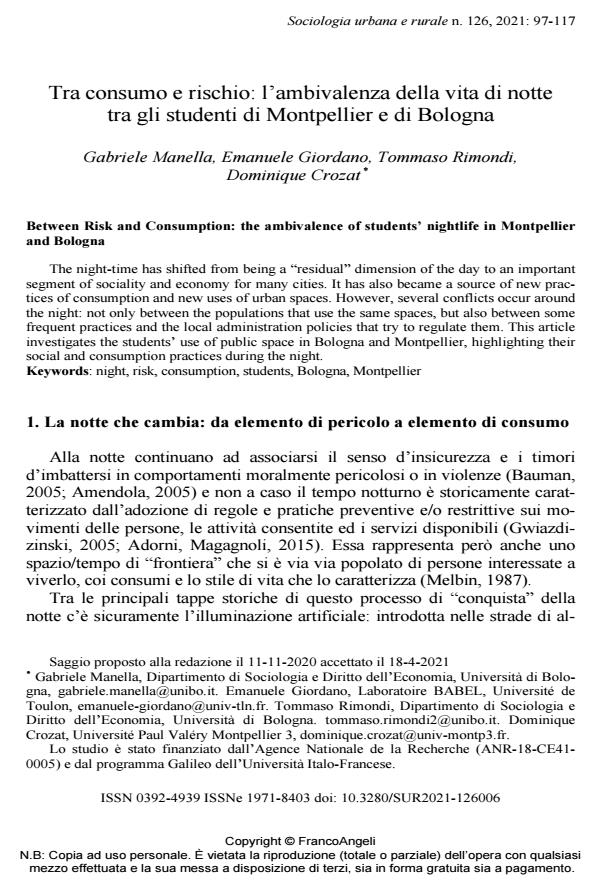Between Risk and Consumption: the ambivalence of students’ nightlife in Montpellier and Bologna
Journal title SOCIOLOGIA URBANA E RURALE
Author/s Gabriele Manella, Emanuele Giordano, Tommaso Rimondi, Dominique Crozat
Publishing Year 2022 Issue 2021/126
Language Italian Pages 21 P. 97-117 File size 208 KB
DOI 10.3280/SUR2021-126006
DOI is like a bar code for intellectual property: to have more infomation
click here
Below, you can see the article first page
If you want to buy this article in PDF format, you can do it, following the instructions to buy download credits

FrancoAngeli is member of Publishers International Linking Association, Inc (PILA), a not-for-profit association which run the CrossRef service enabling links to and from online scholarly content.
The night-time has shifted from being a "residual" dimension of the day to an important segment of sociality and economy for many cities. It has also became a source of new practic-es of consumption and new uses of urban spaces. However, several conflicts occur around the night: not only between the populations that use the same spaces, but also between some frequent practices and the local administration policies that try to regulate them. This article inves-tigates the students’ use of public space in Bologna and Montpellier, highlighting their social and consumption practices during the night.
Keywords: night, risk, consumption, students, Bologna, Montpellier
- Touristification and studentification. New dialectics of urban segregation in historical university cities María José Piñeira, Alfonso Fernández-Tabales, Carmen Mínguez, in Cities 105719/2025 pp.105719
DOI: 10.1016/j.cities.2025.105719
Gabriele Manella, Emanuele Giordano, Tommaso Rimondi, Dominique Crozat, Tra consumo e rischio: l’ambivalenza della vita di notte tra gli studenti di Montpellier e di Bologna in "SOCIOLOGIA URBANA E RURALE" 126/2021, pp 97-117, DOI: 10.3280/SUR2021-126006